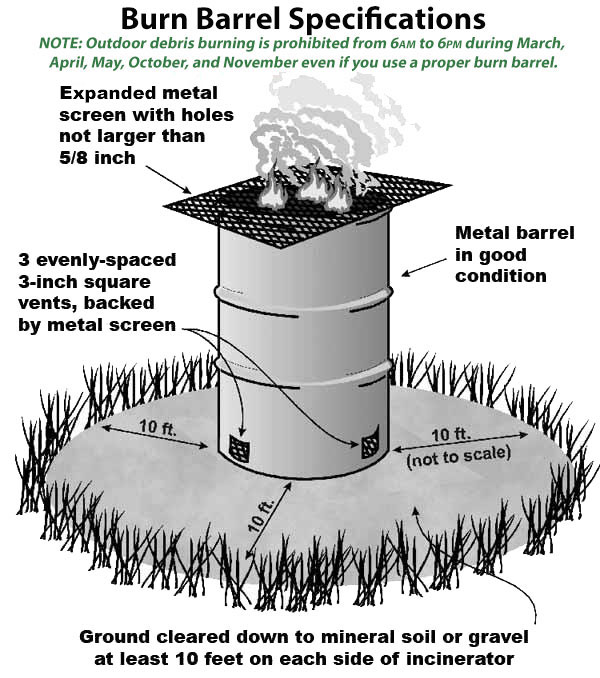Ohio DNR and Ohio EPA Restrict Open Burns


Ohio DNR and Ohio EPA Restrict Open Burns
COLUMBUS, Ohio – It is that time of year again when fire departments across the state are called out to handle brush fires.
According to the Ohio Revised Code 1503.18,Ohio DNR Forestry prohibits outdoor open burning and prescribed fires in the months of March, April, May, October, and November between 6 a.m. and 6 p.m. This ban includes burning of yard waste, trash, and debris, even in a proper burn barrel.
Even outside the time and date restrictions, any person conducting a burn must obtain landowner permission, remain with the fire while it is burning, and take all reasonable precautions to prevent the fire from escaping.
Contact Ohio Division of Forestry 1-877-247-8733.
Additionally, Ohio Administrative Code 3745.19 is enforced by the Ohio EPA. Notification is required for many types of open burns in Ohio.
NEVER to be burned at any time or any place in Ohio:
- Food waste
- Dead animals
- Materials containing rubber, grease, asphalt, or made from petroleum
Other Restrictions:
- Fires must be more than 1000 feet from neighbor’s inhabited building
- No burning when air pollution alert, warning, or emergency is in effect
- Fire/smoke cannot obscure visibility on roadway, railways, or airfields
- No waste generated off the premises may be burned
- No burning within village or city limits or restricted areas
For questions, contact Ohio EPA: (614) 644-2270 or Ohio EPA Open Burning.
What Is the Difference Between an Open Burn and a Prescribed Fire?
The term “open burn” refers to debris, brush and trash fires. Ohio EPA defines an open burn as any outdoor fire without a chimney or stack.
Open burning is particularly dangerous in the spring and fall, when the leaves are on the ground, the grass is not green, and the weather is warm, dry and windy.
“Prescribed fire” refers to fires that are intentionally lit, under predetermined conditions, to meet various resource management objectives. Prescribed fire can be used as a tool to eliminate undesirable vegetation and reduce hazardous fuel levels. When managed carefully, prescribed fire can stimulate the growth of native vegetation and reduce fire hazards brought on by the accumulation of dead vegetation.
Prescribed fires may be conducted during the burn ban, but only with the permission of the Chief of the Division of Forestry. To conduct a prescribed fire when open-burning is prohibited, an Ohio Certified Prescribed Fire Manager must request a waiver from Ohio DNR Division of Forestry.






